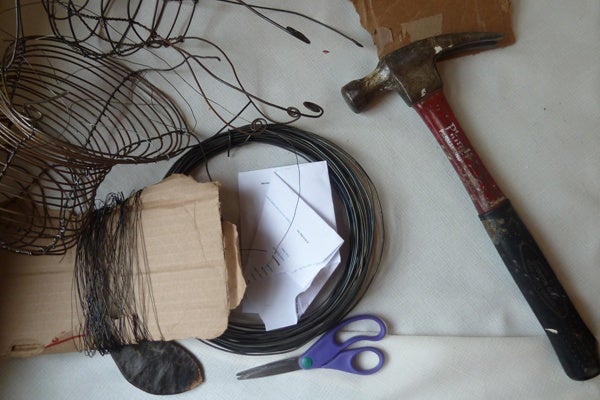Honoring each Philadelphia homicide victim with art
Five local artists are working to memorialize each Philadelphian killed in 2012. But with 78 homicides already and the total growing more quickly than last year, they’re struggling to keep up.
It may be obvious that Philadelphia’s murder count is always growing. But it can still be surprising. Brenda Howell is a mixed-media artist, who’s keeping a close watch. “Almost to an obsessive point where you’re checking once a week, every other day, and kind of hoping that the number doesn’t go up. But in a way, knowing that it’s not going to stop,” said Howell. Howell says the project tries to make people see victims as more than numbers. “I think people can become desensitized to the idea that, ‘Oh three people were murdered this weekend? Oh that’s terrible.” said Howell. “We’re trying to have people slow down and really recognize that these are people’s lives here. And it’s not something that’s supposed to be expected.” Howell and four other artists from the group “The Mamacita Collective” are making vessel sculptures to remember each person murdered this year and their families. The vessels range from open, irregular, banjo-like structures to tightly woven, perfectly symmetrical baskets. Each one will hold natural objects such as stones, horse chestnuts, and pea pods. They’re using black annealed steel wire, common in the shipping industry. “It’s almost kind of like knitting,” said Howell, “a meditative thing. And I go from trying to tame the wire to a rhythm of making the sculpture. At that point, I can start thinking about the victim or the victim’s family. And sometimes I pray for them.” Karen Hunter-McLaughlin is another project member, who’s been clipping news articles of murders. “This was actually in the Northeast Times,” said Hunter-McLaughlin. “This man killed somebody over a dog defecating on his lawn. Harris allegedly pulled a 9mm handgun from his hip and shot Santana repeatedly in the face and chest.” McLaughlin is a painter who began using wire for art a decade ago. “Your hands get very dirty from the blackness of wire,” said McLaughlin, “but I also feel like I’m enriching my blood with all the iron.” She taught the four other Mamacita members how to make the vessels. She can make them wherever she goes. By now, it can take McLaughlin as little as 2 hours to make a sculpture. “The vessels they make these beautiful, beautiful shadows on the wall. And one can’t exist without the other,” McLaughlin said. “It’s sort of like the victim and perpetrator, forever entwined.” None of the Mamacita members has been personally affected by violence in the city. They’re not sure what will happen when the public and victims’ families see the final exhibit in 2013. “I think I initially needed the conversation from Mamacitas to see actually and to hear how the vessel would represent the life lost,” said Dorothy Johnson-Speight, the founder and executive director of Mothers in Charge, an advocacy and support group for families affected by violence. Her son was shot 7 times over a parking space in December of 2001. When she first saw a vessel, she was perplexed for a moment. But then she got it. “It’s so important to remember our children,” said Johnson-Speight. “I don’t want anyone to not remember Khalik. On anniversaries and birthday dates when I don’t get a phone call to say, I’m remembering Khalik today – it’s painful.” So far, the group is behind the murder count in vessels. They’ve made around 70 so far. Still they’re optimistic they can keep up. They’re enlisting the help of the public by holding vessel making workshops throughout the year. And hoping that the number won’t be so high at the end of 2012. To learn about the up-coming workshops, head to mamacitaarts.com.
WHYY is your source for fact-based, in-depth journalism and information. As a nonprofit organization, we rely on financial support from readers like you. Please give today.










